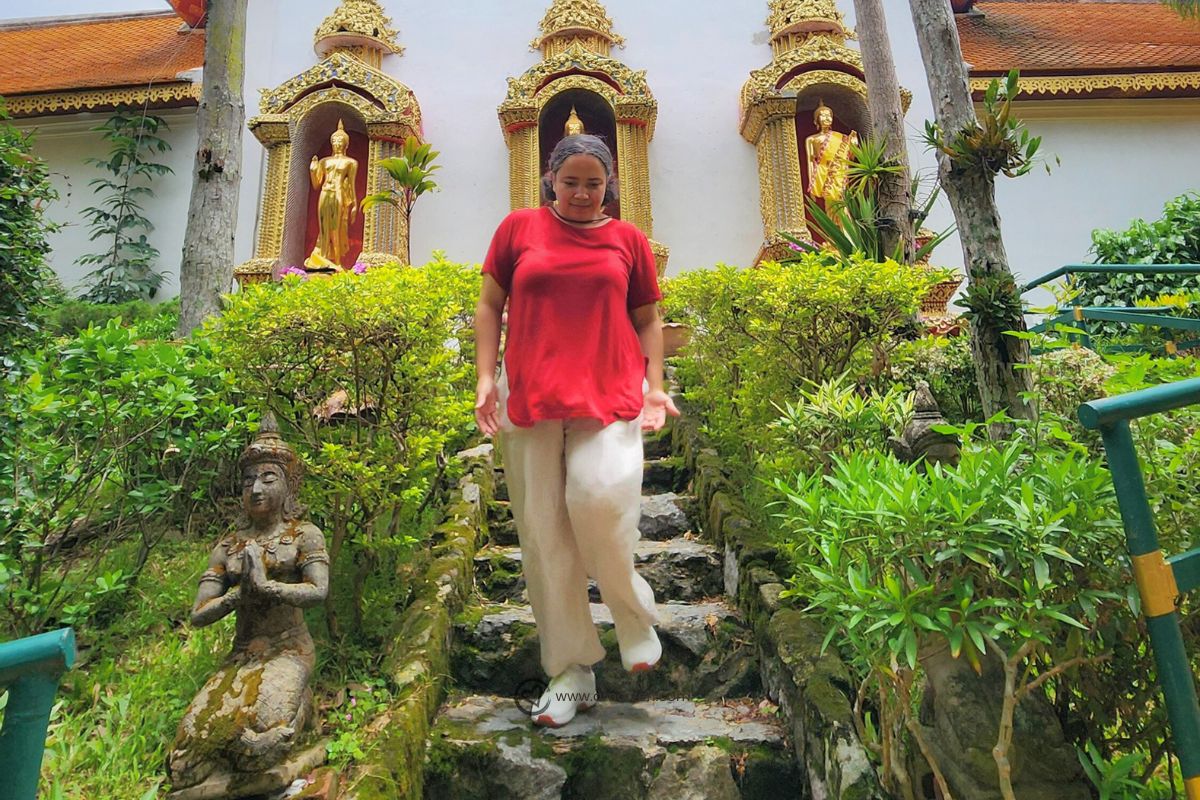The other day, I was doing some research for my website and randomly came across a Reddit thread that made me pause. Someone asked:
“Is somatic yoga a specific style, or more of a teaching approach?”
That simple question made me realize something. For years, I’ve been teaching yoga in a way that blends movement, mindfulness, emotions, and body awareness. I guide my students to notice how they feel—not how they look. I don’t focus much on perfect poses. Instead, I offer gentle suggestions and let people move in a way that feels right for them.
It’s about creating space and trusting the body to speak.
And apparently… that’s what somatic yoga is.
The funny part? I didn’t even know there was a name for what I’ve been doing. I wasn’t calling myself a “somatic yoga teacher.” But now I see that, in my own way, I already am.
So… What is somatic yoga?
So what exactly is somatic yoga?
It’s not a set style like Hatha, Vinyasa or Ashtanga. It’s more like a way of teaching—an approach that helps people connect with how they feel on the inside and how they move through space.
In somatic yoga, we slow things down. We stop pushing. We stop performing.
Instead, we listen. To the breath, to sensation, and to emotion. We learn to trust what the body needs in each moment.
Yoga Journal said it well:
“A somatic yoga practice is more intuitive than a standard yoga class, which often asks you to move mechanically—flex this way, stretch that way, hold, push.”
In other words, it’s not about nailing a pose. It’s about tuning in. Being present. And letting the practice meet you where you are.
Is it branding? Is it legal?
This is where things get a little tricky.
Right now, there’s no official “Somatic Yoga” certification through Yoga Alliance. Somatic therapy is its own kind of training, and yoga has its own world of rules and guidelines. Sometimes they overlap, but often they don’t.
That got me wondering:
Can I even use the word “somatic” on my website or in my class descriptions?
I’m still researching the legalities and trademarks surrounding this word. If you have any insight, please leave a comment. I have come across some sources that suggest it’s fair use as long as it’s not misrepresented as a therapy or specific licensed modality. Others argue it’s become a marketing buzzword. And honestly? It can be both—a meaningful healing practice and a term that’s occasionally overused or misunderstood.
What truly matters to me is clarity, integrity, and safety. While I’m not claiming to be a somatic therapist, I do believe in honoring the body’s natural wisdom, which is a big part of living a holistic lifestyle. As a yoga teacher, I guide others through a somatic lens—with deep respect for the nervous system, trauma recovery, and the inner signals that help us heal. Ultimately, it’s not about trends or titles. Instead, it’s about staying honest, being clear in our intentions, and creating safe, supportive spaces where people can reconnect with themselves.
My journey into the somatic space (without realizing it)

When I became a 500-hour yoga teacher, I didn’t stop there. I felt called to go deeper—into trauma-informed yoga, grief and emotional body work, Ayurveda, and movement therapy. It wasn’t just techniques I was learning; I was actually healing myself in the process. In mind, body, and spiritual growth.
Years of living with chronic illness, unprocessed emotions, identity shifts, and deep inner work shaped how I showed up—not just for myself, but for my students too.
As time went on, my classes naturally began to change. They became less rigid and more intuitive. I started weaving in emotional check-ins, breath-led stretches, spontaneous movement, and stillness that didn’t need to be rushed or filled. There was more room for feeling and being.
Slowly, students started sharing how they felt safe, seen, and truly at home in their bodies. That’s when it clicked…
This is somatic yoga.
And I didn’t need a special certificate to tell me I was already teaching it from the heart.
Final thoughts: A somatic approach to yoga is a return to wholeness
You might not always see “Somatic Yoga” listed on a studio schedule—but that doesn’t mean it isn’t happening.
In fact, if you look a little closer, you’ll find teachers creating spaces that feel different. These are the classes where the body, emotions, intuition, and lived experiences are all welcomed. Instead of chasing perfect alignment, the focus is on how the practice feels—not how it looks.
That’s the beauty of it. Returning to wholeness is holistic living. And honestly, that’s what somatic yoga is all about.
So, even though I didn’t always have the words for it, I now understand:
Yes, I am a somatic yoga teacher.
And maybe… you are too.
If this way of teaching speaks to you, or if you’re wondering how to use somatic language in your yoga or wellness work, I’d love to hear from you.
Let’s connect! Keep this conversation going, keep learning from one another, and continue expanding what yoga can be—both on and off the mat.
